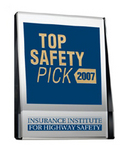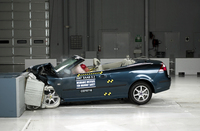Saab 9-3 Ranks Among Safest Convertibles - VIDEO STORY
SEE ALSO: Saab Buyers Guide
 |
To qualify for ‘Top Safety Pick’ award, a maximum ‘good’ rating must be recorded in each of three demanding tests involving frontal and side impacts and an evaluation of seat/head restraint protection in a simulated rear-end impact. The vehicle must also offer electronic stability control and convertibles must be equipped with roll bars.
“We are delighted that these IIHS findings confirm our own crash test results,” says Per Lenhoff, head of Safety at Saab Automobile AB in Sweden . “This reassures consumers that the 9-3 Convertible is among the very best in its class for crash safety.”
 |
 |
For the side impact test, a deformable barrier simulating an SUV or light truck is propelled against a stationary vehicle at 31 mph (50 kph) on the driver’s side. Structural performance and potential injuries to a dummy at the wheel and another seated immediately behind are assessed.
In the dynamic seat and head restraint test, a seated dummy is mounted on a sled which is accelerated to 10 mph (16 kph) and stopped within 0.1 seconds, simulating the effect of a 20 mph (32 kph) rear-end impact. The test is designed to assess protection against neck injury.



